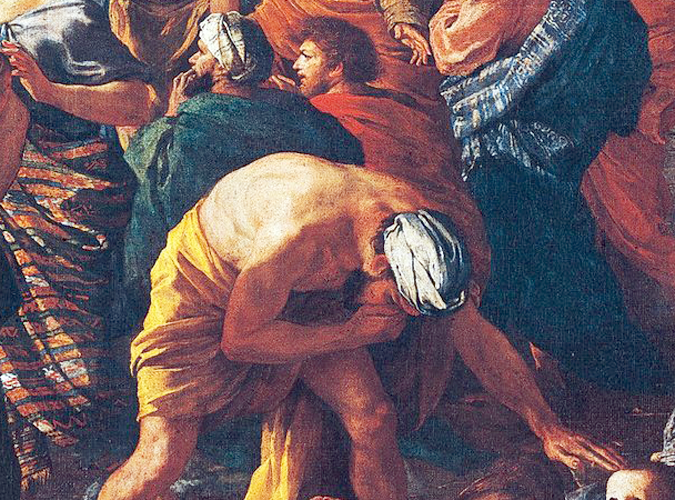New York Times’ COVID-19 Coverage Reviewed by Bruce Brown
A former New York Times reporter looks at the current Times reporting
The following is Bruce Brown‘s commentary response from the Coronaviras Vaccine & Herd Immunity Digest to an article by Donald G. McNeil Jr., “Your Ancestors Knew Death in Ways You Never Will,” that appeared in the July 15, 2020 New York Times.
Brown writes: “Do not fear the wolf, which is the conronavirus for us now. The wolf has come to make us strong and clean again. We are going to come out of this pandemic a stronger species than we were going in.”

THIS ARTICLE (Your Ancestors Knew Death in Ways You Never Will by Donald G. McNeil Jr.), is a simplistic “think piece” that inadvertently reveals several things it does not apparently intend or comprehend.
The first is how much the belief system of secular liberals resembles the belief system of Christian conservatives.
Both secular liberals — for whom the New York Times is frequently taken as a sort of Holy Book of Truth — and devout Christian conservatives believe humanity will be saved from this great coronavirus crisis by a higher, external force outside their everyday lives.
For Christians, it is the hand of almighty God. For secularists, it is the hand of almighty Science.
So the good liberal author of this piece, New York Times science reporter Donald G. McNeil Jr., contends that “science and public spending have saved us from pandemics worse than this one,” and it will save the day this time too. Although certainly comfortable enough as platitudes go, this statement is simply not true, nor does McNeil understand what “saved us” from past pandemics.
Here’s the matter of pandemics put simply. Every single pandemic that has afflicted the human species — from before the beginning of recorded history until now — has been been overcome and ended by a very simple behavioral and biological processes that are evident every day in the lives of human beings everywhere, and many other higher species on Earth as well.
These simple, every day processes produce cultural behavior and aggregate genetic movement toward what we now call “herd immunity,” meaning sufficient immunological resistance to a given microbial attacker so that the population is no longer susceptible to wildfire like pandemics.
True, both religion and science can play a supporting role in the natural movement toward herd immunity. Religion can give people emotional strength, which is important because people’s emotions play such an big role in every struggle they face. And science likewise can play an important supporting role, especially if a vaccine can be created, since a vaccine can accelerate the species’ movement toward herd immunity, and save lives that would otherwise be lost in what remains a bitter battle against COVID-19.
But neither religion nor science is the prime mover or the root cause here. The process that ends pandemics is natural, is with us every day, and has been with us as long as there have been human beings on earth. This is something that should make people everywhere on the earth feel good about our prospects in the battles to come, and proud and easy in their humanity .
The process has three parts — (1) the natural physical development of immunity through antibodies, T-Cells, immune system “dark matter,” and the other known and unknown natural processes of our physical bodies that fight invasive, infectious diseases, and (2) broad but not universal changes in human behavior (the species always hedges its bets) that increase herd immunity, and (3) the death of the weakest members of the populations who are tinder for the pandemic firestorm.
So a society with many weak members, and nursing homes full of the elderly, the injured and the brain dead, America was primed for a pandemic as 2020 dawned. It was like a dry California forest in the summer with a lot of dry dead branches and assorting underbrush lying on the ground because management authorities stopped the natural burning process, and created super fires for their trouble — the forest fire equivalent of a pandemic.
A profound irony of pandemics is that they make the human species strong and vital — physically, emotionally and intellectually. We — human beings as a species– will be a stronger, more competitively capable species when this pandemic is over than we are now. Coronavirus is like the wolf pack that cleans the caribou herds and keeps them strong by killing the weak.
Do not fear the wolf. It is preparing us for greatness.
NOW LET’S TAKE A look at New York plagues of the past, and the number of people they killed.
These are some of the plagues that this New York Times “think piece” says have been ended by “science and public spending.” Among others, we find the:
- Yellow fever epidemic of 1805, 270 people died in New York
- Small pox epidemic of 1824, 394 people died in New York
- Cholera epidemic of 1834, 3,053 people died in New York
- Cholera epidemic of 1854, 5,071 people died in New York
- Diptheria epidemic of 1887, 4,509 people died in New York
- Meningitis epidemic of 1904, 2,219 people died in New York
- Spanish influenza epidemic of 1918, 12,562 people died in New York
There were no vaccines for any of these diseases at the time of the New York epidemics listed above, so each disease flared and then burned through America’s largest city for as long as long and hard as herd immunity would let it, and they finally burned out as a super fire when easy or weak victims had been killed, and selectively eliminated.
Changes in human behavior during plagues frequently affect herd immunity for the species too, both for and against. In A Journal of the Plague Year, Daniel Defoe (of Treasure Island fame) describes how residents of London during the Plague of 1665 became highly concerned with the cleanness of the air they breathed with others (just like with COVID-19 today), so they fled the cities (just like with COVID-19 today), thereby spreading the plague to remote areas outside the cities (just like with COVID-19 today).
Defoe also describes what we today call “asymptomatic carriers”:
I mean such as had received the contagion, and had it really upon them, and in their blood, yet did not show the consequences of it in their countenances: nay, even were not sensible of it themselves, as many were not for several days. These breathed death in every place, and upon everybody who came near them; nay, their very clothes retained the infection, their hands would infect the things they touched, especially if they were warm and sweaty, and they were generally apt to sweat too.
Now it was impossible to know these people, nor did they sometimes, as I have said, know themselves to be infected…”
In response, the City of London enacted increasingly stringent but not always effectual laws to try to stop the spread of the contagion (just like with COVID-19 today). Londoners in 1665 were fully alive to the threat of airborne, aerosol infection, just people are today with the COVID-19 masks that many people are required to wear now. In 1665, Defoe wrote of how the Bubonic plague spread by “mutual respiration”:
Contagion is the inseparable symptom of the plague; which, by mutual respiration, is transfused from the infected persons to the lungs and stomach of those who approach them.”
AND THERE ARE also echoes of what we’re experiencing today in the annals of the ancient world. During the so-called Justinian plague that struck Europe in 541 AD, during the reign of Roman Emperor Justinian, the emperor himself was sickened, and the functioning of the entire Roman Empire was significantly disrupted by the Bubonic plague, Yersinia pestis. Modern medical research has established that the Justinian strain of Bubonic plague originated in China (just like with COVID-19 today).
And nearly a millennia before Justinian, Greek philosopher Socrates was said by Edward Gibbon in The Decline and Fall of the Roman Empire to have lived through the plague that struck Athens during the second year of the Peloponnesian War (430 BC) by virtue of his “temperance.”
Ancient Greek physicians argued about whether a recovered plague patient could be reinfected with the plague — in other words, whether plague survivors achieved strong immunity against re-infection (just like with COVID-19 today). Thucydides argued that plague survivors acquired immunity, while Gibbons wrote that “Evagrius, who had family experience of the plague, observes, that some persons, who had escaped the first, sunk under the second attack; and this repetition is confirmed by Fabius Paullinus.”

THE ONLY REASON I mention all this folly and sorrow is to demonstrate that the chaotic behavior we’ve seen so far in the global reaction to the COVID-19 pandemic is actually just fine, and absolutely not a cause for concern or worry.
So you say the government didn’t get a good handle on the situation at the outset, when it could have made a big difference? Don’t worry about it. It’s scripted that way, and that’s exactly how human pandemic dramas have played out, over and over again.
This is simply how human beings act at the beginning when a pandemic confronts them. It’s been going on like this for thousands of years beyond counting. It’s how we get the job done, as a species. It’s how we survive.
Please note, however. There was never a vaccine against any of these ancient plagues of ancient Greece and Rome, as there was no vaccine for Defoe’s London plague of 1665, which is also the plague that produced Der Doctor Schnabel von Rom (“Doctor Nose of Rome”), and no vaccine for the 19th and 20th century New York City plagues listed above.
Science as we know it today did not even exist, and was not a factor at all in these stories. Here, the natural bio/behavioral process of creating herd immunity overcame every plague threat naturally, including the big one, the Spanish influenza of 1919.
Sometimes the human cost of combing out the weak undercoat of humanity was considerable, and authentically tragic. But the species has come through every single plague threat it has ever faced, and come through stronger. As with the arctic caribou and the wolf, we do better as a species when our weakness is combed out.
FINALLY, I must concede that New York Times science reporter Donald G. McNeil Jr. is correct in one respect — public spending has played a role in the history of human plagues.
In Defoe’s time, the City of London and other afflicted cities of Europe undertook modest public expenditures to control the disease’s spread, which began with burying the dead, a public minded act that immediately increased taxes since the citizens of London were levied a burial tax to pay for the monthly public expenditures to bury the dead.
The City of London’s next recourse, according to Defoe, was to lock anyone diagnosed with the plague and their entire family in one house together under lock and guard, which could amount to a death sentence for anyone diagnosed and anyone they had contact with, when it was strictly enforced, which it sometimes was.
A thousand years before, in the nearly decade long era of the Justinian plague, the Romans still had the scope and power to levy and expend on a significant scale. And Emperor Justinian did expend, although mostly for bureaucracy to try to maintain the pre-plague tax flow to Imperial coffers, so that — according to the Gibbon — the living were liable for their own tax obligation, as well as the tax obligation of their plague-deceased neighbors.
And yet the human species survived, thrived, conquered new and unimagined realms like never before. So do not fear the wolf, which for us now is the coronavirus.
The wolf has come to make us clean and strong. And I’ll say it again — we are going to come out of this pandemic a stronger species than we were going in.
— Bruce Brown
Editor, Coronavirus Vaccine & Herd Immunity Digest




